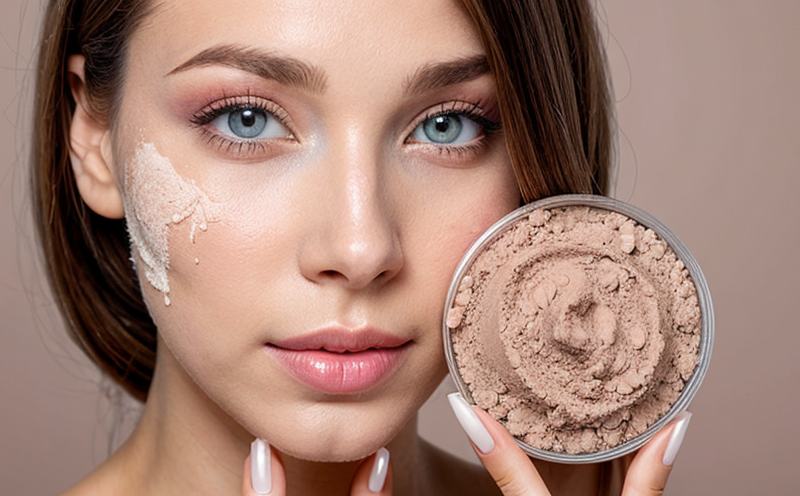Colorant Sensitization Testing in Lipsticks
In the realm of cosmetics testing, the safety and efficacy of beauty products are paramount. One critical area within this domain is colorant sensitization testing for lipsticks, a crucial step to ensure that cosmetic formulations do not cause allergic reactions or irritation upon use. This service involves assessing the potential allergenicity of pigments, dyes, and other colorants used in lipstick formulations.
Colorants are often the first point of contact with skin during lipstick application, making it essential to test for sensitization risks. The testing process typically involves exposing human or animal skin cells to the colorant under controlled conditions to observe any immune responses that may indicate an allergic reaction. This can be achieved through various in vitro and in vivo methods.
The primary goal of this service is to identify and mitigate potential allergens early in the development phase, thereby enhancing product safety and compliance with regulatory standards such as ISO 10993-11 and ASTM D6500. By offering this service, we assist cosmetic manufacturers in meeting stringent regulatory requirements and ensuring their products are safe for consumers.
The testing procedure involves the following key steps:
- Sample preparation: The lipstick sample is ground into a fine powder to ensure even distribution of colorants.
- Exposure: The prepared pigment is then exposed to human or animal skin cells in controlled laboratory conditions.
- Observation and Analysis: Changes in the cells' behavior are observed over time, providing insights into potential sensitization risks.
This service not only helps companies comply with international standards but also enhances brand reputation by ensuring product safety. Our team of experts employs advanced analytical techniques to provide accurate results that can guide formulation adjustments and reduce the likelihood of adverse reactions in end-users.
| Test Type | Description |
|---|---|
| In Vitro Tests | Use human or animal cell cultures to assess sensitization potential without live animals. |
| In Vivo Tests | Conduct tests on living organisms, typically rabbits, to observe immune responses in real-time. |
The results of colorant sensitization testing are crucial for R&D engineers and quality managers. These findings can inform product development decisions, ensuring that only safe materials are used in formulations. Additionally, this service supports procurement teams by providing reliable data on the safety of colorants sourced from various suppliers.
To summarize, colorant sensitization testing is a vital component of cosmetic safety protocols. It ensures that lipsticks and other cosmetics do not pose unnecessary risks to consumers, thereby maintaining trust and satisfaction in the market.
Benefits
- Enhanced Product Safety: Identify potential allergens early in the product development cycle.
- Compliance with Standards: Ensure adherence to international safety and quality standards like ISO 10993-11.
- Improved Brand Reputation: Build trust by offering safe and reliable products.
- Cost Efficiency: Avoid costly recalls and legal issues by addressing potential risks proactively.
- Informed Decision-Making: Provide actionable insights to R&D engineers and quality managers for formulation adjustments.
The benefits of this testing are manifold, encompassing not only regulatory compliance but also the enhancement of consumer trust and satisfaction. By investing in colorant sensitization testing, cosmetic companies can safeguard their brand reputation while ensuring product safety.
International Acceptance and Recognition
- ISO 10993-11:2020: Provides guidelines for evaluating the biocompatibility of medical devices, which indirectly applies to cosmetic safety.
- ASTM D6500: Offers methods for assessing the skin sensitization potential of substances used in cosmetics.
- EN 14362-1:2009: Specifies requirements and test methods for determining the allergenicity of colorants in cosmetic products.
These international standards are widely recognized across different regions, ensuring that the results of colorant sensitization testing are universally applicable. By adhering to these guidelines, cosmetic manufacturers can ensure their products meet global safety and quality benchmarks.
Use Cases and Application Examples
| Case Study | Description |
|---|---|
| New Product Development: | A leading cosmetic company uses colorant sensitization testing to identify potential allergens in new lipstick formulations. |
| R&D Innovation: | An R&D engineer integrates the test results into product development, optimizing formulation for safety and efficacy. |
| Supply Chain Management: | A procurement team selects suppliers based on their adherence to colorant sensitization testing protocols. |
Colorant sensitization testing is a cornerstone of cosmetic safety protocols. Its application spans various stages of product development, from new formulations to supply chain management. By integrating this service into their processes, companies can ensure that their lipstick products are safe and compliant with international standards.





